mievent
Sustainably Stylish at SILMO
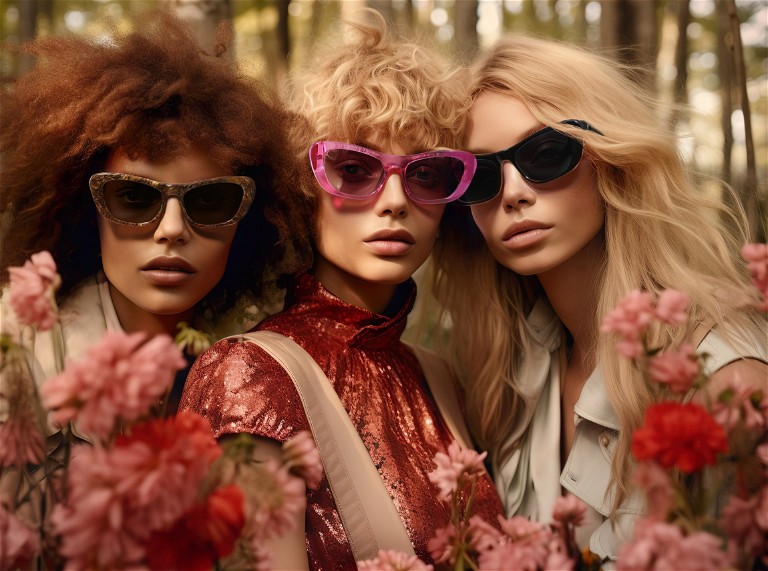
The Proud Future of Eyewear
The Avantguard's AI models.
SILMO 2023 was a kaleidoscope of colour and light that featured sustainability and the future as key components, while not losing sight of the current trends in fashion and style. Alan Saks was among the 31,000 visitors to scope it out.
WRITER Alan Saks
SILMO 2023 Paris kicked off in late September over four days, with a great turnout from industry and delegates.
A remarkably broad spectrum of 929 exhibitors filled a massive 75,000m2 of exhibition space, attended by over 31,000 visitors, including almost 16,000 from overseas, representing 46 countries.
Exhibitors and delegates were busy from start to finish, with some exhibitors already happy with interest on day one, which was somewhat quieter than Saturday and Sunday, where there were still queues of arrivals late into the afternoon.
To truly appreciate the scale of SILMO, you simply have to attend. It’s well worthwhile, not just as a buying opportunity of spectacle frames (and instruments), but also to be exposed to the latest trends and technology and hear some interesting talks.
FOCUS ON SUSTAINABILITY
Wandering the halls of SILMO, it was very clear that sustainability is a major issue these days. There was a massive focus on corporate social and environmental responsibility (CSR). Many companies offered frames made from recycled materials, sometimes from different types of base material including recycled nylon and more traditional acetate recycling.
Several companies collect machined bits of metal and acetate used in manufacture and recycle these. One uses ‘friction welding’ of different pieces of acetate to create laminated sheets of acetate, avoiding the use of traditional methods that utilise volatile organic compounds like acetone. Some use bean and seed extracts and other natural sources of cellulose-derived biomaterials.
3D PRINTING
Sustainability dovetailed nicely with another prominent feature of SILMO 2023 – 3D frame printing. Many companies now offer 3D printed frames – often with recycled materials and biomaterials as a more sustainable feature.
Materialise is an example of one such company, not just active in spectacle frames but with global reach in various facets of healthcare, including cardiovascular and orthopaedics. It acts as a contract manufacturer for 70 well-known frame brands, offering a ‘concept to collection’ service. Clients can choose from a variety of more sustainable and low environmental impact materials – including Polyamide 11, derived from castor beans – with manufacturing techniques touting biosourced materials, recycled materials, and metals ranging right up to titanium.
Fine-tuned 3D printing manufacture eliminates or reduces stock waste.
Our carbon footprint can be reduced by printing locally, reducing shipping and warehousing needs, so this type of technology offers a good global solution. It’s therefore relevant to Australian/New Zealand manufacture, while also being scalable for our smaller markets.
Such technological evolution helps build a sustainable business aligning people, the planet, and profit.
VIRTUAL DISPLAYS
Machines and towers that perform facial, optical, and frame measurements were also on display as were ‘virtual try-on’ systems that enable people to visualise frames on their face virtually, with impressive results. This technology can be used in-office and remotely.
Smart eyewear and virtual reality were other emerging trends to keep an eye on in the future.
AUSSIE RULES AND EUROPEAN ENTHUSIASTS
Dr Francesca Ferro, director of sales for OVVO optics, supplied in Australia by Aaron’s Eyewear, explained how OVVO has used aerospace technologies – creating a material from a combination of titanium and stainless steel and incorporating key design principles such as quality, longevity, robustness, and extreme flexibility. One of the OVVO display stands features a frame suspending a 20kg weight to demonstrate its extreme flexibility and robustness. All the frame components are easily disassembled and can be adjusted, with a unique hinge design as well as a variety of different nose pad options and frame styles. Dr Ferro also showed several stylish carbon fibre frames as well as superfine wood laminates, which were outstanding.
Stéphanie Kallen from Götti, also distributed in Australia by Aaron’s Eyewear, proudly featured the company’s ‘made in Switzerland’ sustainable, minimalist, lightweight, and additive 3D printed ranges, with some featuring horn, titanium, and acetate frames in interesting finishes and colours.
It wasn’t hard to spot Niels Overeem with his Aussie-themed T-shirt. He represents Rolf frames in Australia. Rolf has numerous award-winning features and a strong focus on sustainability. An essential part of its philosophy is to produce high-quality eyewear from the finest materials derived from wood, stone, and bean, to try to leave a better planet than the one found.
Rolf ’s iconic frames feature wood laminates, multi-layer carbon fibre, and bean-derived materials. They have a unique, flexible, screwless hinge featuring an ‘O-ring’ and are proud holders of four SILMO d’Or awards for the technology used in the frames.
Wooden frames were a notable trend at SILMO, from not only the larger more established manufacturers, but also from smaller boutique manufacturers. The French Wave of Wood showed some delightful wooden laminated frames in a variety of colours and finishes. In a further drive to sustainability, some of the frames feature a very fine, superbly finished final layer, derived from recycled aluminium soft drink cans, and clearly showing the patterns and colours from the cans.
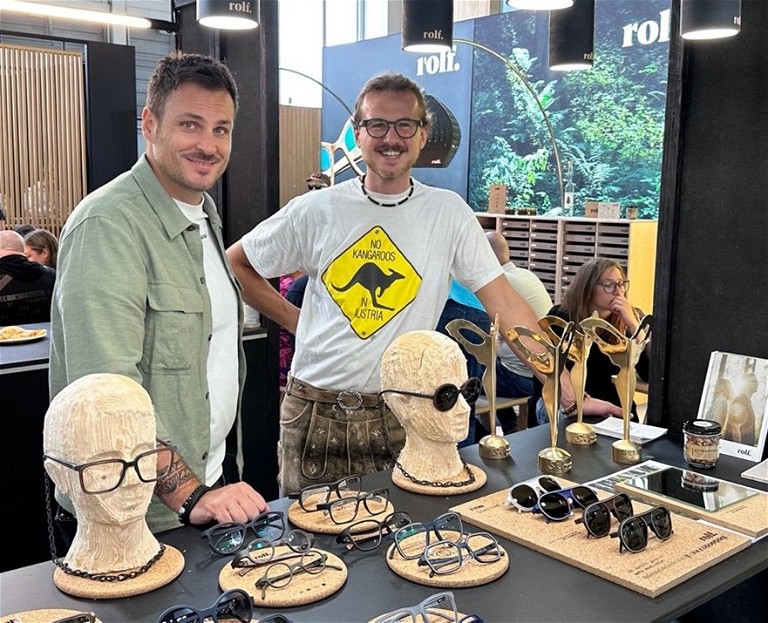
Niels Overeem with his Aussie-themed T-shirt at the Rolf display.
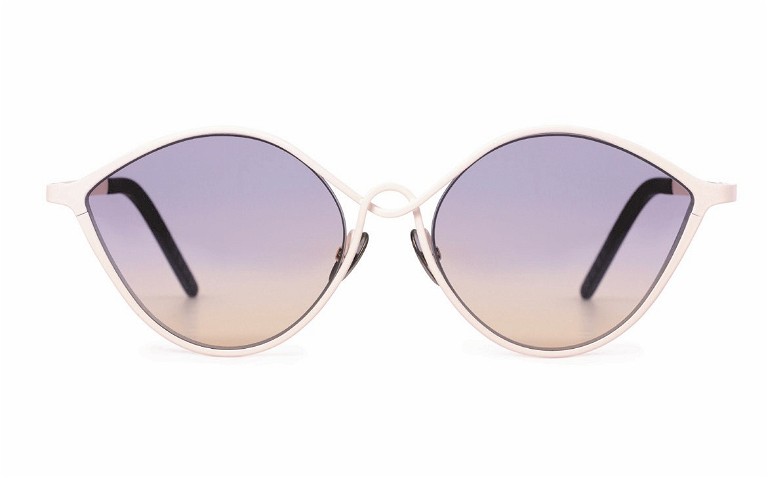
Winner, Premier Classe Show Award, 'Lane' by Veronika Wildgruber.
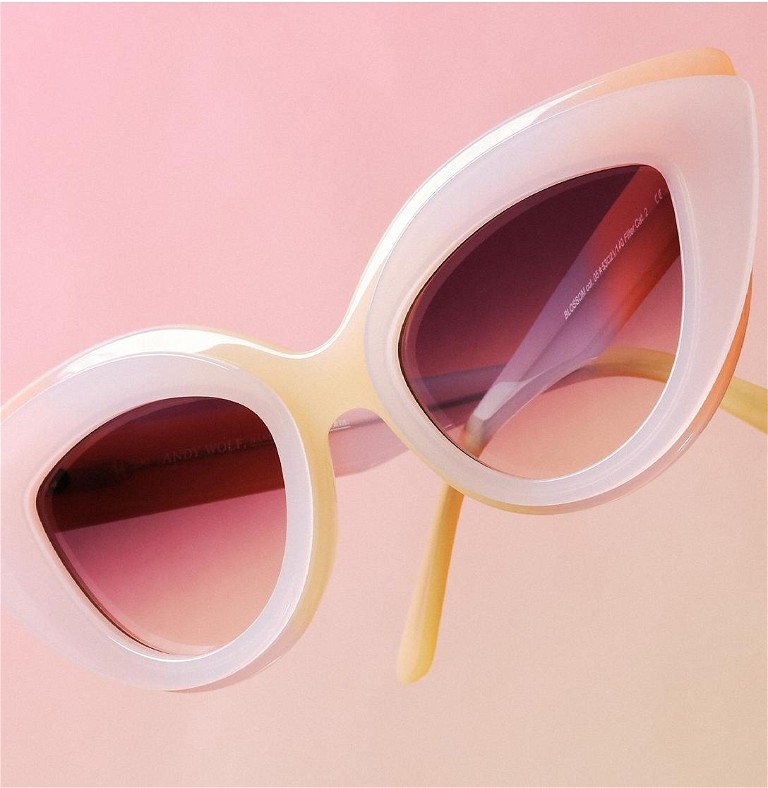
Winner, Sunglass Eyewear Designer Award, 'Blossom' by Andy Wolf.
The Avantguard – a start-up founded by entrepreneur and philanthropist Faiza Seth – was delighted to launch its inaugural range. Australian Dave McHenry, who many will remember from Sunday Somewhere, and colleague Emma Balke, were busily showing people and distributors (including a few Australian practitioners) their Rewilding Collection. The range consists of 11 new designs, manufactured in Japan from premium bio-degradable, recycled or plant-based acetates, with the strong design influence of well-known Australian creative director, Dave Allison. To further cement its sustainable philosophy, The Avantguard’s antistatic chemical-free microfibre cleaning cloths are made from recycled plastic bottles and its spectacle cases are vegan leather pouches with natural dyes. Interestingly, the ‘people’ used to model the new range of frames are virtual, created by artificial intelligence. They were rather impressive.
“ Wooden frames were a notable trend at SILMO, from not only the larger more established manufacturers, but also from smaller boutique manufacturers ”
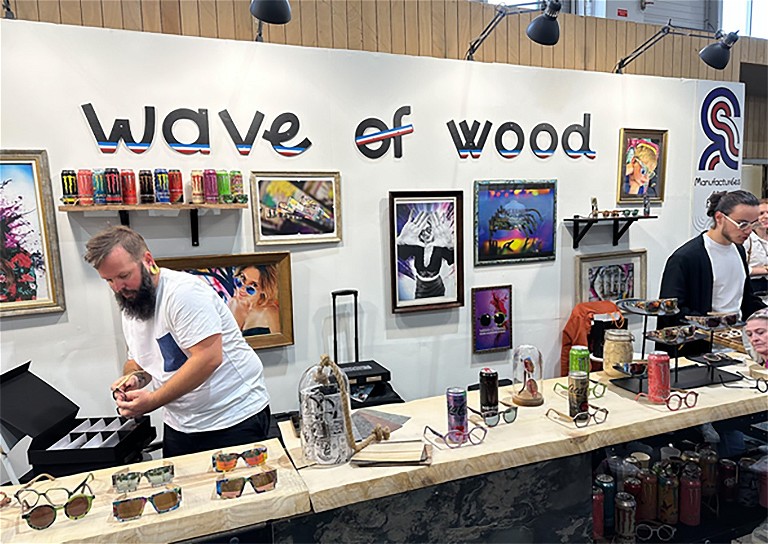
Wave of Wood has developed frames from soft drink cans.
Another proudly Australian company, AM Eyewear, was celebrating its 20th anniversary with the launch of its Brit-Pop, New Order sustainable range, made from bio-based Italian acetate. As Andhra-Kumar (Simon) Ponnusamy explained, AM stands by the ethos of quality over quantity, and values of sustainability and recycling. AM uses ZEISS bio-based nylon lenses in its sunglass ranges and offers to buy back any pre-owned AM Eyewear frames to be reworked and donated to underprivileged communities. Some years ago, Mr Ponnusamy introduced facets to his frame designs, creating subtle contours, angles, and reflections.
From humble beginnings in Sydney, AM Eyewear is now a global brand, with offices and warehousing in Sydney and Amsterdam, supplying dozens of markets. Mr Ponnusamy explained how AM has a loyal following; some who bought funky AM frames for New Order concerts in their 20s are now choosing new frames for their presbyopia, while their next-generation children are also buying into the AM Eyewear buzz.
After 40 years at the helm of l.a. Eyeworks, distributed in Australia by ProOptics, it was great to see Gai Gherardi still has a glint in her eye and passion for the brand. Ms Gherardi, along with equally enthusiastic Jacque Katsieris (ProOptics), and Brent Zegner, a 20-year veteran at l.a. Eyeworks, explained the brand’s DNA. Specialised acetates and laminates – some extremely fine – are used to obtain an exceptional quality and finish. A new ripple titanium is achieved with dual-sided pressure to obtain the precise ripple effect while maintaining shape and integrity. Finished off with high pressure powder coating, the colours are fantastic. l.a. Eyeworks’ design process and passion go right down to its collectable cases.
Today, after four decades and hundreds of frame designs, the company remains in private ownership, with extreme loyalty among wearers, a global reach and many fans in Australia and New Zealand.
STRUKTUR, distributed in Australia by ProOptics and made in Normandy, is one of only 10 manufacturers who still produce frames in France. Designer Thierry Bonhomme was very pleased with some frames that were recently designed and manufactured using old acetates found in a store room – with unique results, obtained by mistake, after inserting the material upside down during manufacture. The finish and texture was uniquely interesting and subtle. STRUKTUR’s more avant-garde twotone stainless steel wire frames require hand painting with a needle and incredible precision, measured in microns, necessary to obtain the two-colour finish on adjacent, touching wires.
Despite being in great demand, visionary founder and CEO of Sea2see, François van den Abeele, chatted at length to mivision about his philosophy, the environment, Africa, the oceans, and how he founded the company later in life, with no previous experience in eyewear and a big loan. One of the first to promote sustainability in eyewear, Mr van den Abeele had a vision, in 2015, to produce spectacle frames from sea waste. In so doing he’s created growing reclamation and recycling projects with numerous collection points in Spain and Africa, creating jobs and environmental and social awareness in the process. Sea2see now collects 20 tons of recyclable material per month, using what’s needed for frames. There are plans afoot to build a recycling factory and supply materials to the automotive and other industries. The collected sea waste plastics are recycled in Spain into pellet form, and the frames are manufactured in Italy.
MYKITA was another standout in the sustainability arena and was justifiably proud in being recipients of the inaugural 2023 SILMO Prix RSE award for social and environmental responsibility. MYKITA is a Berlin founded and based firm, with all its staff and manufacturing onsite in Berlin. Environmental responsibility is in its DNA. Since its inception 20 years ago, and the very first MYKITA collection, its signature stainless steel frames have been crafted from highly recycled stainless steel. It consists of 90% recycled content sourced from a Swedish company that has been scrap-based and recycling steel for over 100 years. Leftover stainless steel from the manufacturing process is returned to the plant to complete the loop. The plant uses an electric-arc furnace powered almost entirely by fossil-free electricity.
For its acetate frames, MYKITA uses sustainable Eastman Acetate Renew, a mostly bio-based material derived from sustainable wood pulp and recycled waste plastics that uses pioneering molecular recycling to break down hard-to-recycle plastics to the molecular level. Equivalent to the highest quality traditional acetates, the resultant frames have a much lower carbon footprint.
“ crystal and white frames were popular and there was a massive range of bright and fluorescent colours to be seen ”
Marchon was pleased to receive a SILMO d’Or award for its Nike Flyfree sunglasses. They feature interchangeable lens tints to adapt to any environment that latch securely into the frame, and include Rx capability. The system is easy to use, very neat, and the frame material is derived from at least 40% castor bean oil.
You can see the rest of the awards on the SILMO website: en.silmoparis.com.
EYES RIGHT AND LOTS MORE LEFT
Eyes Right Optical is another Australian company with a long track record. Founded in 1992 by Gaye and David Wymond, it is today owned by their children, Mark and Lisa. They represent, among other companies, MOREL France, which is also multigenerational. Founded in 1880, MOREL is now run by fourth generation siblings Jérôme, Francis, and Amélie Morel. Amélie Morel is also the current President of SILMO. Francis Morel, who oversees export markets, said MOREL is now active in more than 80 markets around the world. His children are now joining MOREL, representing the fifth generation to continue the family tradition.
He said MOREL was working on new production lines at its French HQ, as its current production is running double shifts to meet demand.
At the nearby Danish Design Eyewear Group, CEO Lars Flyvholm mentioned William Morris London has been added to a fantastic stable that already includes Prodesign, Face à Face, Alium, WOOW, Klisgaard Eyewear, Inface, Charles Stone New York, and Nifties. Prodesign remains Eyes Right Optical’s leading seller in Australia but some of the other brands are also very popular down under. We certainly saw some great frames on display.
It was good to catch up with Fréderic Beausoleil from France, who has stuck with his guns and design philosophy for over 30 years, offering visionary yet delicate frames that bridge tradition and inspiration. In a similar vein, Blake Kuwahara, from the USA, has unique designs featuring bold, interesting laminates and facets, which create some special styles that are proving to be popular in a broad range of outlets in far flung places.
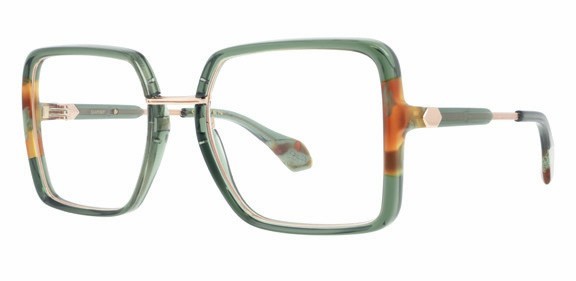
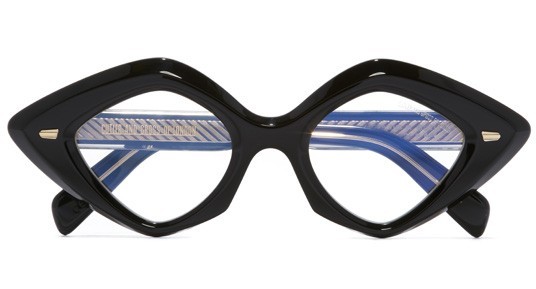
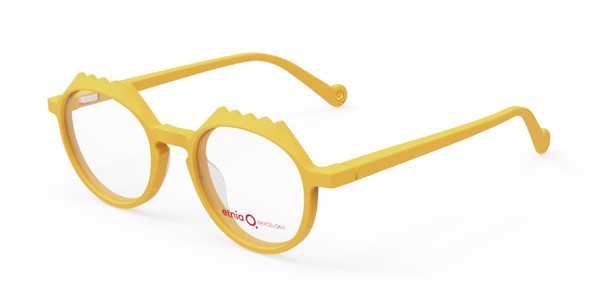
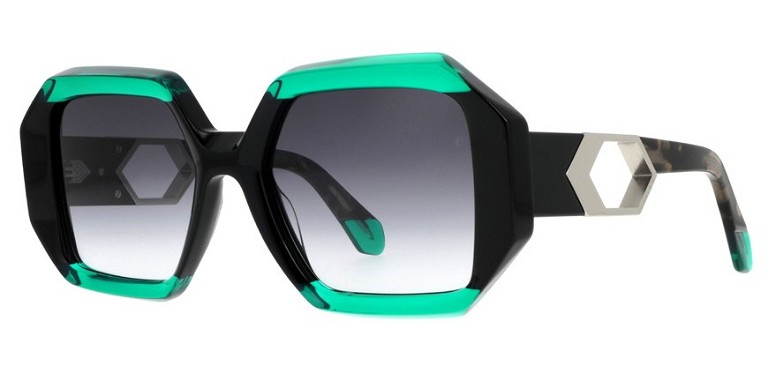
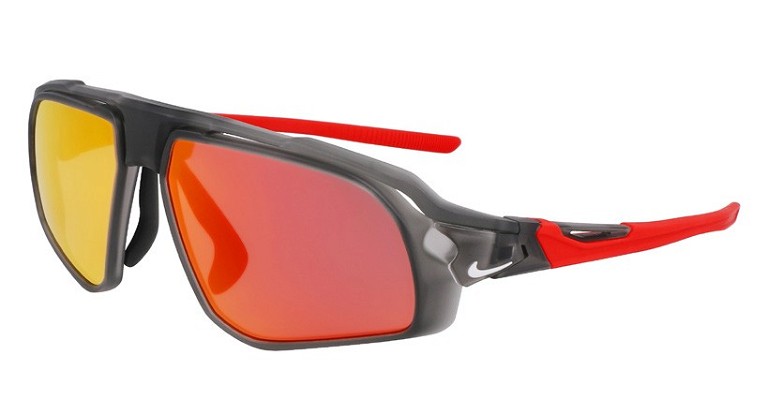
A selection of SILMO d'Or winners, anticlockwise from left: Carven, Cutler and Gross, Etnia Barcelona, Carven, Saargos, La Font and Marchon.
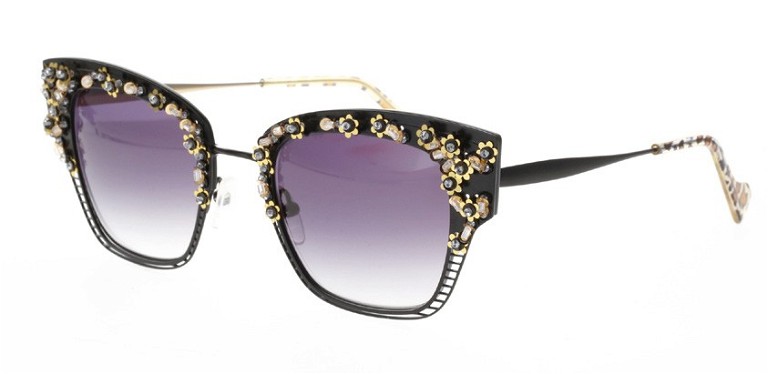
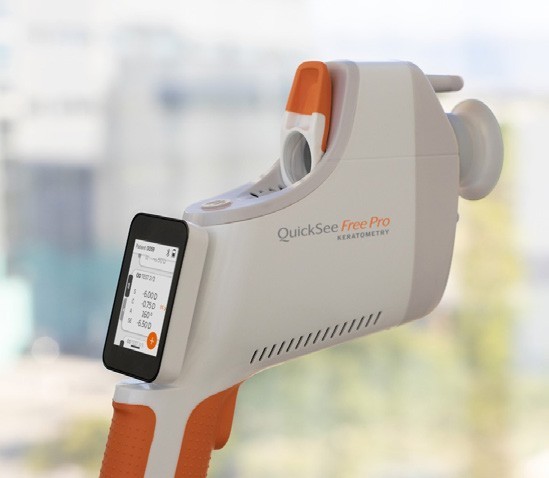
Last but not least, it was good to see Aussie Tanya Highfield at the Nathalie Blanc stand representing Noo, which also carries Masunaga, Kreuzberg Kinder, Gigi Studios, and Francois Pinton, among other brands.
Apart from sustainability and facets it was notable that crystal and white frames were popular and there was a massive range of bright and fluorescent colours to be seen at every turn. A number of visitors were seen wearing such standout fluoro frames.
It was also notable that large styles continue to prosper but rimless frames were not that visible.
SILMO also featured a massive range of the latest trends in the Forum Tendances (trends forum) sporting hundreds of interesting frame styles that served as the main feature at the entrance to SILMO, followed by Concours Design Optique featuring design studies from a variety of contributors. The SILMO Talks area featured scheduled open-air lectures, including panels and talks on myopia management, CSR, and smart eyewear.
The 12th Scientific Conference of the International Opticians Association took place in lecture rooms, with simultaneous translation into French/English, featuring talks by speakers from the United Kingdom, New Zealand, Australia, and France. Among other topics, the speakers covered sports and performance vision, in keeping with the French Rugby World Cup and upcoming Summer Olympics 2024. There were also prominent displays of the latest and future technologies in the Futurology section, as well as the museums featuring the Oyonnax and Morel histories, the Place d’Italia and the SILMO d’Or nominees. Workshops for custom frame manufacture and design were also available and seemed well supported. A SO’Quiet area featured bean bags and noise cancellation technology in a relaxation zone designed to offer a well-deserved moment of calm tranquillity while you could rehydrate nearby at Bar à Eaux.
Many stands featured a seemingly endless supply of drinks, food, champagne, and social interaction with plenty of business being written. A variety of bars, restaurants, and food stands throughout the venue, both indoors and out, provided places to relax and refuel.
As always SILMO was a hectic, diverse, amazing place to be!